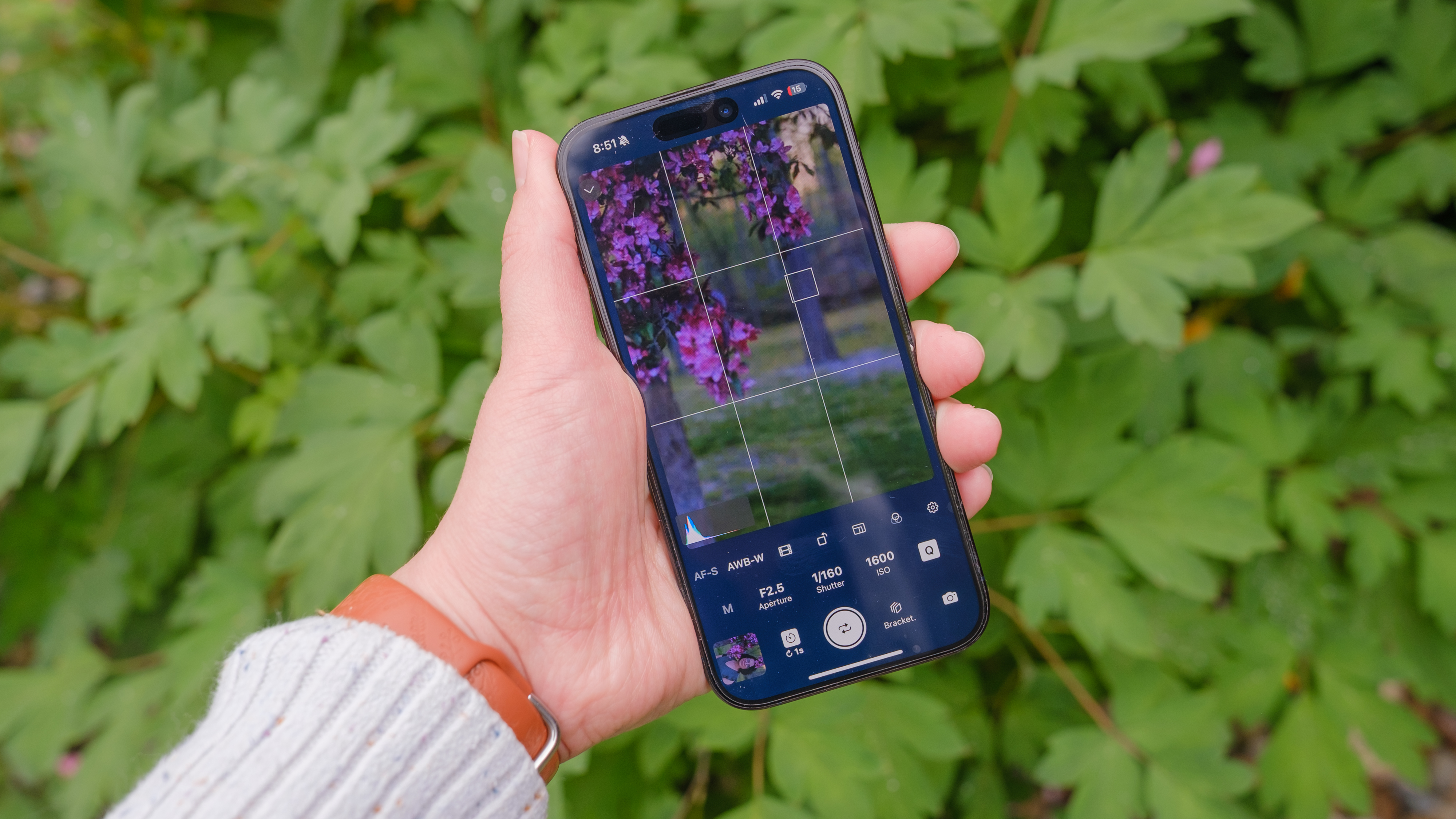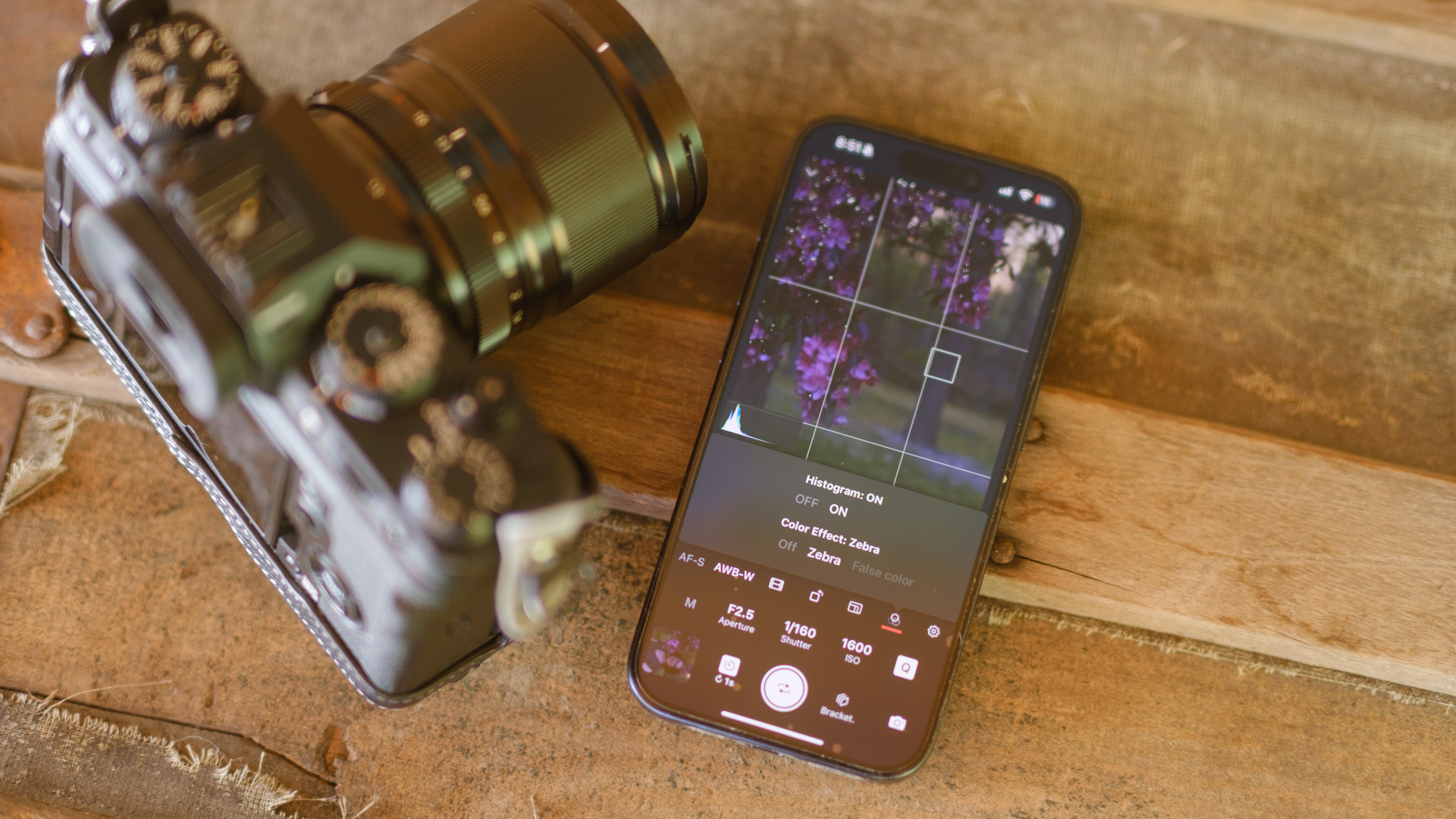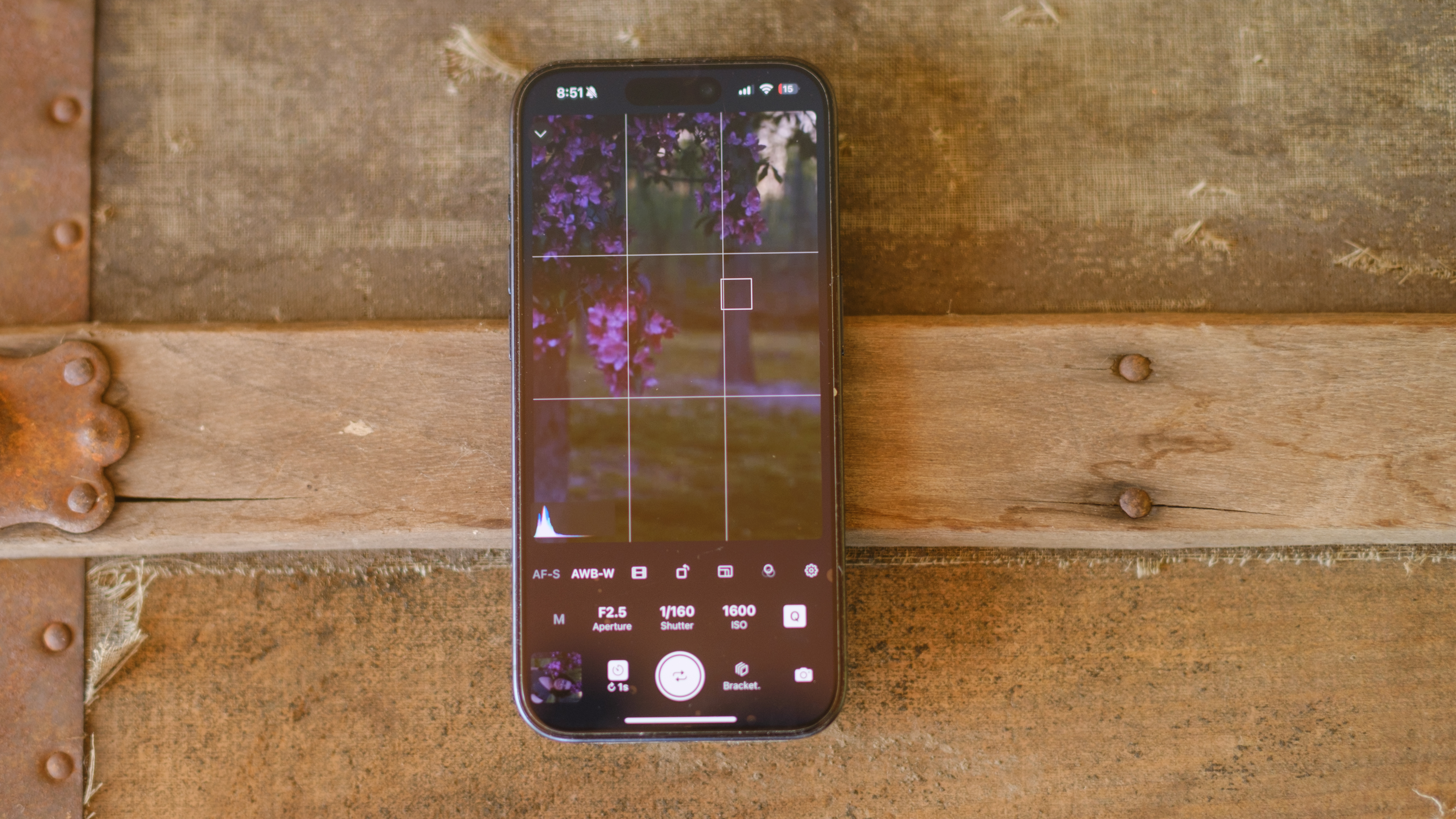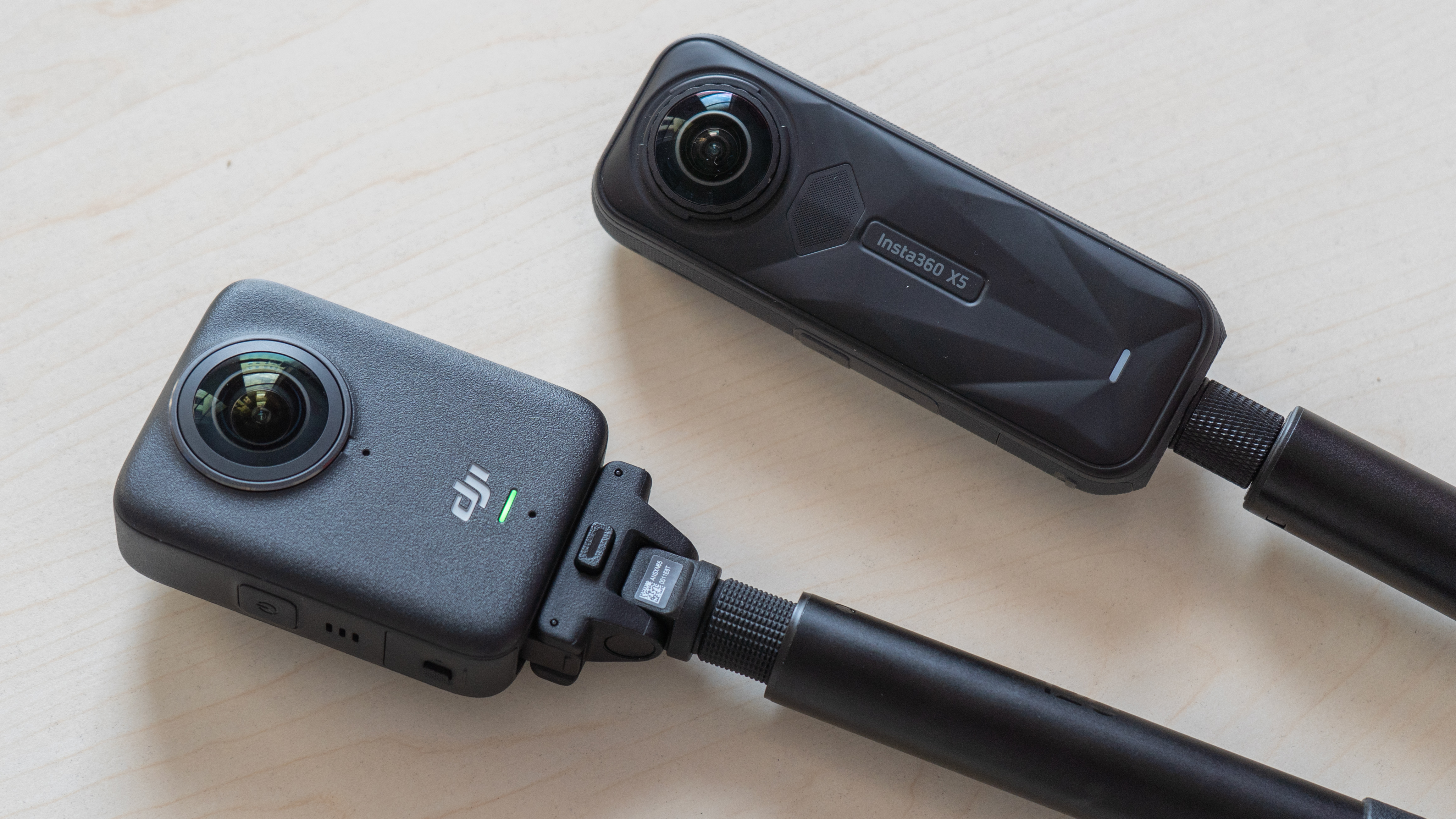Remote camera apps are typically terrible. I tried a third-party app instead – and I was blown away by this one key feature
Shutter Camera Remote's intervalometer made self-portraits far less painful

Remote camera apps enable creatives to trigger a camera using a smartphone – but these apps are often littered with connectivity issues and limited features.
I’ve lost count of the times that the various remote camera apps that I’ve tried have failed to connect, crashed, or taken longer than they should for a simple task.
These native smartphone apps are getting better – I’ve personally had far fewer issues with the newer Fujifilm XApp than the earlier Fujifilm Camera Remote.
Similarly, the more recent reviews of apps like Canon Camera Connect, Nikon SnapBridge and Sony Creators’ App seem to be more positive than early reviews – although they make it clear that there’s still room for improvement.
But the handful of times that I need to use the smartphone remote often still leave me frustrated, which is why I decided to see if a third-party app could offer more features or fewer connectivity issues after reading an article about Shutter Camera Remote.
(I tried the Fujifilm version, but the developer also has versions for Canon and Sony.)
I don’t use the remote app on my Fujifilm camera very often, but I use it occasionally to transfer photos to print on my Instax Mini Link printer, to upgrade my camera’s firmware, or to take selfies with my mirrorless camera.
The best camera deals, reviews, product advice, and unmissable photography news, direct to your inbox!
The latter is by far the most frustrating experience, although that’s in part because I prefer being behind the camera rather than in front of it.
Regardless, I hadn’t taken updated self-portraits in more than a year, and the cherry blossoms were blooming, so I decided to drag out the tripod and try the Shutter app rather than the native XApp.
(And yes, I’m going to call them self-portraits rather than selfies because using studio lights and a mirrorless camera feels like it deserves a more dignified nomenclature than an iPhone selfie.)
I very quickly fell in love with a feature that my usual remote camera app didn’t have: an intervalometer. Using the Shutter app, I could take several shots in a row with one press of the button on the remote.
This felt much more efficient than pulling out the app, triggering a shot with a two-second delay, hiding the phone out of the shot, smiling, then pulling the app out to do it all over again. To help conserve smartphone battery, it continued to work in the background while my iPhone was sleeping.
The intervalometer meant I could take several shots in a row with one tap, adjusting the pose slightly each time, rather than taking one at a time. When I’m behind the camera, it’s easy to adjust the pose to get it just right, or to use burst to make sure I don’t get a blink.
That’s harder to do when I’m in front of the camera, but triggering a series of shots instead of one at a time eased some of that pain. The intervalometer worked particularly well when I switched from self-portraits of just me to family self-portraits.
My camera itself has a built-in intervalometer, so I could technically arrange my family, set the focus, start an interval recording and jump in a few shots.
But the XApp doesn’t appear to have the option to trigger a series of shots from the app itself, where I have the ability to tap and focus and make sure that I’m framed properly before triggering the shots.
The intervalometer was by far my favorite part of using a third-party app instead of the native app, but Shutter had a few other features that I couldn’t currently find on XApp.
Shutter supports exposure bracketing as well as that intervalometer. The app’s live view can display a histogram as you shoot. It can also rotate the live view when you shoot vertical shots, without having to rotate the phone. There are also multiple options for different aspect ratios and composition guide overlays.
Shutter also supports Apple Watch, enabling photographers and videographers to trigger a shot from the wrist. Sadly it needs Watch OS 9 to work, and my ancient Apple Watch still works just as well as the day it came out of the box, so I haven't seen the need to upgrade, which means I didn’t have the ability to test the Watch version.
The XApp does, however, win out in a few areas. The XApp supports updating the firmware wirelessly, a feature that I use often since downloading the firmware to an SD card instead is annoying. (Firmware should always be downloaded directly from the source so, even if Shutter had this feature, I wouldn’t use it.)
The XApp has the option to turn the flash on and off remotely, and while the Shutter app connects quickly it requires going into the camera menu – whereas the XApp can initiate the connection from the smartphone without the menu, as long as the wireless communication is already on.
Perhaps the biggest downside to using a third-party app is that, unlike the native apps that come from the camera brand itself, the Shutter app isn’t free.
The $3.49 / £2.99 / AU$5.99 monthly and $24.99 / £24.99 / AU$39.99 annual subscriptions aren’t terrible, and there’s an option to buy a lifetime license for $65 / £69 / AU$99. But I think photographers are getting tired of subscriptions (And Adobe’s price increases aren’t helping).
If I took self-portraits more than once or twice a year, though, I wouldn’t hesitate to pick up a subscription. The intervalometer feature took out enough frustration that I think it’s worth the cost. But, for firmware updates and transferring existing images to my smartphone, I’m keeping the native XApp around.
The Shutter Camera Remote is available on iOS for compatible Canon, Fujifilm, and Sony cameras.
You may also like
Browse the best smartphone photography apps or the best camera remotes.

With more than a decade of experience writing about cameras and technology, Hillary K. Grigonis leads the US coverage for Digital Camera World. Her work has appeared in Business Insider, Digital Trends, Pocket-lint, Rangefinder, The Phoblographer, and more. Her wedding and portrait photography favors a journalistic style. She’s a former Nikon shooter and a current Fujifilm user, but has tested a wide range of cameras and lenses across multiple brands. Hillary is also a licensed drone pilot.
You must confirm your public display name before commenting
Please logout and then login again, you will then be prompted to enter your display name.



